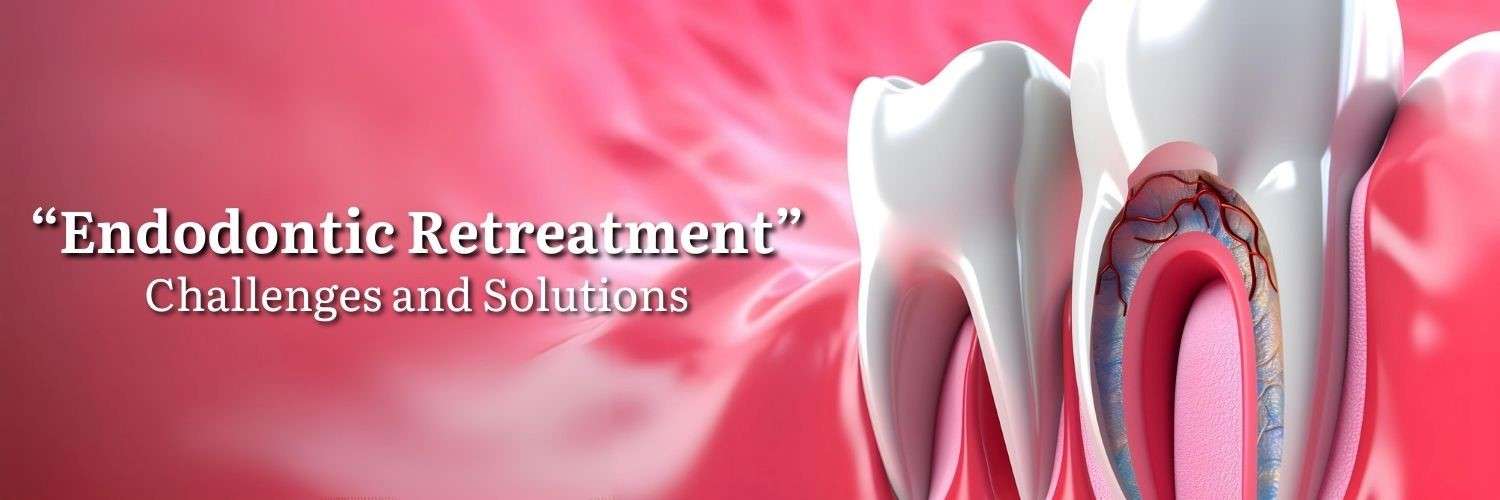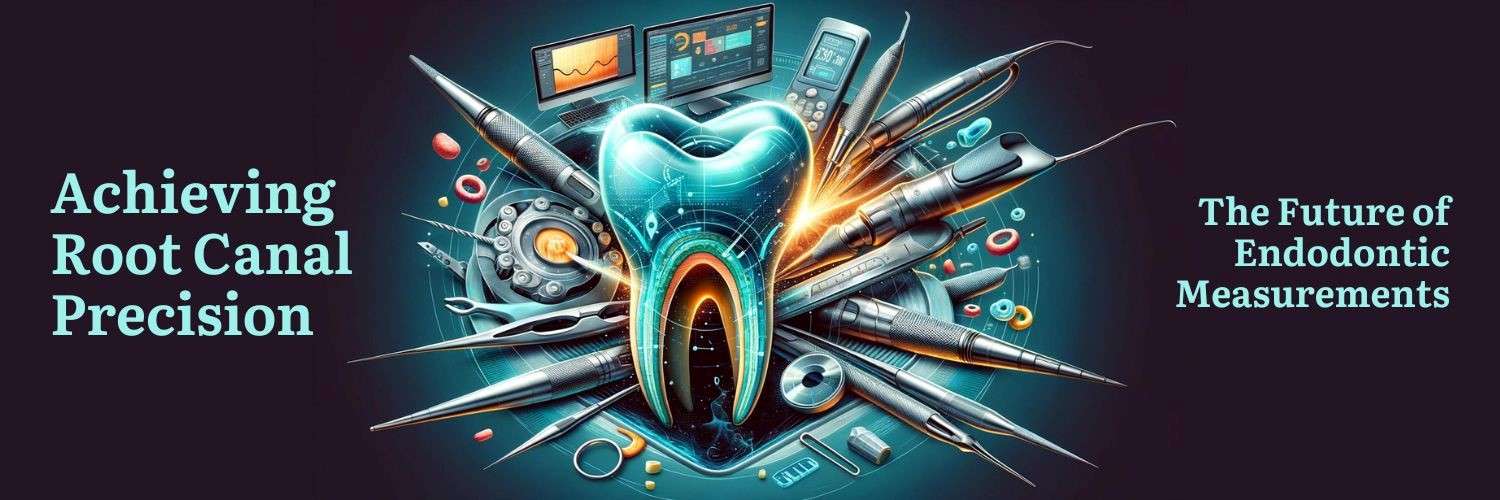Endodontic Retreatment: Challenges and Solutions
Revisiting the Roots – The Imperative of Endodontic Retreatment
Endodontic retreatment emerges as a crucial procedure in the realm of dental care, specifically designed to address and rectify issues stemming from previous root canal treatments. It serves a pivotal role in preserving oral health, targeting the eradication of persistent or newly developed infections within the root canal system, thus preventing tooth extraction. This procedure not only aims to eliminate infection but also to restore the tooth’s functionality, ensuring the longevity of the patient’s natural dentition.
The landscape of endodontic retreatment is continually evolving, underscored by the significance of incorporating advanced technologies and methodologies. The adoption of such innovations enhances the precision and effectiveness of retreatment, offering dental professionals the tools needed to navigate complex root canal anatomy and tackle challenges that may arise during the procedure. Advanced technologies, including sophisticated imaging systems and precision instruments, facilitate a thorough evaluation and treatment process, elevating the standard of care provided to patients.
As we delve deeper into the imperative of endodontic retreatment, it becomes evident that staying at the forefront of technological advancements is not just an option but a necessity for practitioners dedicated to offering the best possible outcomes in preserving and enhancing oral health.

The Foundation of Endodontic Retreatment
Endodontic retreatment is necessitated by the persistence of infection or the emergence of new infections in teeth that have previously undergone root canal therapy. This need arises from a variety of circumstances, such as the intricate nature of root canal systems that may harbor untreated microbial infection, the breakdown of initial filling materials, or the development of new decay that compromises the seal of the root canal filling, allowing bacteria to re-enter. According to studies, the success rate of primary root canal treatment ranges from 86% to 98%, leaving a small but significant number of cases requiring further intervention to preserve the tooth.
The cornerstone of successful endodontic retreatment lies in the accurate assessment of the root canal morphology and the identification of the underlying causes of treatment failure. Here, advanced diagnostic tools play a pivotal role. The Woodpecker DPEX V Apex Locator stands out as an indispensable instrument in this diagnostic arsenal. Its technology enables the precise measurement of the root canal length and the detection of any anatomical variations or additional canals that were not addressed in the initial treatment. By providing accurate readings of the apical constriction, the Woodpecker DPEX V ensures that the retreatment process is both thorough and tailored to the specific needs of each case.
Incorporating the Woodpecker DPEX V Apex Locator into the endodontic retreatment workflow significantly enhances the practitioner’s ability to diagnose and plan an effective course of action. This level of precision is essential for navigating the complexities of retreatment, ultimately leading to improved outcomes and the preservation of the patient’s natural tooth.

Diagnosing Failed Root Canal Treatments
Failed root canal treatments can result from several factors, including complex root canal anatomy that was not fully treated, persistent or secondary infections, and breakdown of the sealing material leading to bacterial recontamination. Precise diagnostics play a critical role in identifying these underlying causes, guiding the planning and execution of effective retreatment strategies.
The Woodpecker DPEX V Apex Locator emerges as an essential tool in the diagnostic process, offering unparalleled accuracy in locating the apical terminus of the root canal. This precision is particularly valuable in cases where initial treatments may have missed intricate anatomical features such as additional canals, lateral canals, or apical deltas. By accurately determining the working length and revealing variations in canal morphology, the Woodpecker DPEX V aids in pinpointing the specific issues that have led to the failure of the initial root canal treatment.
Utilization of the Woodpecker DPEX V Apex Locator allows endodontists to approach retreatment with a detailed understanding of the root canal system’s architecture. This insight is crucial for devising a retreatment plan that addresses all areas of concern, ensuring a comprehensive approach to eliminating infection and achieving successful endodontic outcomes. Through the integration of such advanced diagnostic tools, dental professionals can enhance the precision and efficacy of endodontic retreatment, ultimately improving patient care and preserving oral health.

Tackling Challenges in Retreatment: Techniques and Tools
Endodontic retreatment poses unique challenges, notably the removal of previous endodontic materials and navigating altered canal anatomy. These complexities require precision and care to avoid further damage to the tooth structure. Successful retreatment hinges on the ability to efficiently remove filling materials, such as gutta-percha, and any obstructions while thoroughly cleaning and disinfecting the canal system.
The Woodpecker Endo Free Endomotor stands out as a critical tool in this process, offering advanced features designed for the efficient removal of canal obstructions. Its high torque and customizable settings allow practitioners to adapt to the varying hardness of endodontic materials, ensuring their complete removal with minimal effort. The Endo Free Endomotor’s precision and versatility make it an invaluable asset in addressing the technical challenges of retreatment.
Complementing the mechanical removal of materials, the Woodpecker U6 Ultrasonic Scaler plays a pivotal role in the detailed cleaning and disinfection of the canal system. Utilizing ultrasonic vibrations, it facilitates the removal of debris and biofilm from canal walls, including hard-to-reach areas and complex root canal anatomy. The U6 Ultrasonic Scaler’s ability to deliver thorough cleaning significantly enhances the effectiveness of the disinfection process, creating an optimal environment for the successful healing and sealing of the root canal system.
Together, the Woodpecker Endo Free Endomotor and U6 Ultrasonic Scaler equip dental professionals with the techniques and tools necessary to overcome the challenges of endodontic retreatment, ensuring the best possible outcomes for patients.

Non-Surgical vs. Surgical Endodontic Retreatment
Endodontic retreatment can be approached through non-surgical or surgical methods, depending on the specific circumstances surrounding the failed root canal treatment. The choice between these approaches largely hinges on the nature of the failure, the condition of the tooth, and the patient’s overall oral health status.
Non-Surgical Retreatment typically involves re-entering the tooth to remove the previous root canal filling materials, followed by thorough cleaning, disinfecting, and refilling of the canal system. This option is often preferred when the initial failure is due to incomplete cleaning or filling of the canals, or when new decay has exposed the root canal system to bacterial contamination. Advanced endodontic tools, such as the Woodpecker Endo Free Endomotor, play a crucial role in efficiently removing obstructions and preparing the canal for a new filling.
Surgical Endodontic Retreatment, or apicoectomy, may be considered when non-surgical retreatment is not feasible or has been unsuccessful. This involves making an incision in the gum tissue to expose the underlying bone and the root’s tip (apex) to remove any infected tissue, followed by sealing the end of the root canal. The Woodpecker U6 Ultrasonic Scaler is invaluable in surgical scenarios for its precision in cleaning the surgical site and facilitating the removal of calcified tissues without damaging the surrounding structures.
The Woodpecker U6 Ultrasonic Scaler showcases exceptional versatility, being instrumental in both non-surgical and surgical retreatment scenarios. Its ability to deliver meticulous cleaning and preparation enhances the success rates of both approaches, ensuring optimal conditions for the healing and long-term success of the retreated tooth.
Advances in Endodontic Retreatment Techniques
The field of endodontic retreatment is continuously evolving, with recent advancements significantly enhancing the precision, efficiency, and outcomes of these procedures. Among the forefront of these innovations is the integration of state-of-the-art equipment designed to tackle the unique challenges of retreatment.
A standout in this technological evolution is the Woodpecker Endo Free Endomotor. This advanced piece of equipment offers dental professionals unparalleled control and precision during retreatment procedures. Its features are tailored to the complex task of removing existing root canal fillings, navigating through altered canal anatomy, and preparing the tooth for a new filling. The Endo Free Endomotor stands out for its customizable settings, including adjustable torque and speed, which are crucial for dealing with a wide range of materials and conditions encountered during retreatment.
The significance of these advancements lies not just in their technical capabilities but in their impact on patient care. By providing more controlled and precise retreatment procedures, the Woodpecker Endo Free Endomotor reduces the risk of further damage to the tooth structure, minimizes patient discomfort, and improves the overall success rate of endodontic retreatments.
These technological advancements, exemplified by the Woodpecker Endo Free Endomotor, mark a significant step forward in endodontic care. They reflect a broader trend towards more minimally invasive, patient-centered approaches in dentistry, offering new hope for patients requiring endodontic retreatment.
Ensuring Success in Endodontic Retreatment
Achieving successful outcomes in endodontic retreatment relies on a blend of cutting-edge technology, strategic planning, and active patient involvement. A personalized approach, tailored to address the specific reasons behind the initial treatment failure, is paramount to restoring the tooth’s health and function.
Strategies for Success: Utilizing advanced diagnostic and treatment tools, such as the Woodpecker Endo Free Endomotor and the Woodpecker U6 Ultrasonic Scaler, allows practitioners to precisely navigate and treat complex root canal systems. This precision, combined with an individualized treatment plan that considers the unique anatomical and pathological conditions of each case, significantly increases the likelihood of a successful retreatment.
Patient Education and Engagement: Educating patients about the reasons for their initial treatment failure, the steps involved in retreatment, and the importance of post-retreatment care is crucial. This dialogue not only demystifies the process but also fosters a collaborative relationship between the dentist and patient. Engaging patients in their care encourages adherence to follow-up appointments and oral hygiene practices essential for the long-term success of the retreatment.
In conclusion, the key to ensuring success in endodontic retreatment lies in leveraging the latest technological advancements while adopting an individualized approach that actively involves the patient. By combining these elements, dental professionals can enhance the efficacy of retreatment procedures, ultimately leading to better oral health outcomes and patient satisfaction.
Conclusion: Elevating Endodontic Retreatment with Advanced Solutions
The journey through the complexities of endodontic retreatment reveals the undeniable importance of integrating modern technologies into retreatment strategies. Tools like the Woodpecker DPEX V Apex Locator, Endo Free Endomotor, and U6 Ultrasonic Scaler represent more than just advancements in dental equipment; they symbolize a paradigm shift towards more precise, efficient, and patient-friendly endodontic care.
The adoption of these sophisticated technologies enables dental professionals to navigate the challenges of retreatment with greater confidence and accuracy. The Woodpecker DPEX V Apex Locator offers unparalleled precision in measuring root canal lengths, essential for successful retreatment planning. The Endo Free Endomotor brings exceptional control and versatility in removing old fillings and preparing canals, while the U6 Ultrasonic Scaler ensures thorough cleaning and disinfection, crucial steps in combating persistent infections.
As we conclude, it is clear that the future of endodontic retreatment lies in embracing these advanced solutions. Dental professionals are encouraged to incorporate these technologies into their practices, not only to enhance the technical aspects of retreatment but also to improve overall patient experiences. By doing so, they not only elevate their own practice but also contribute significantly to the advancement of endodontic care.
The call to action for dental practitioners is to continuously seek out and integrate such advancements, thereby enhancing their ability to provide effective endodontic retreatment and ultimately improving patient outcomes. In the ever-evolving field of dentistry, staying at the forefront of technology is key to delivering the highest standard of care.





Leave a comment